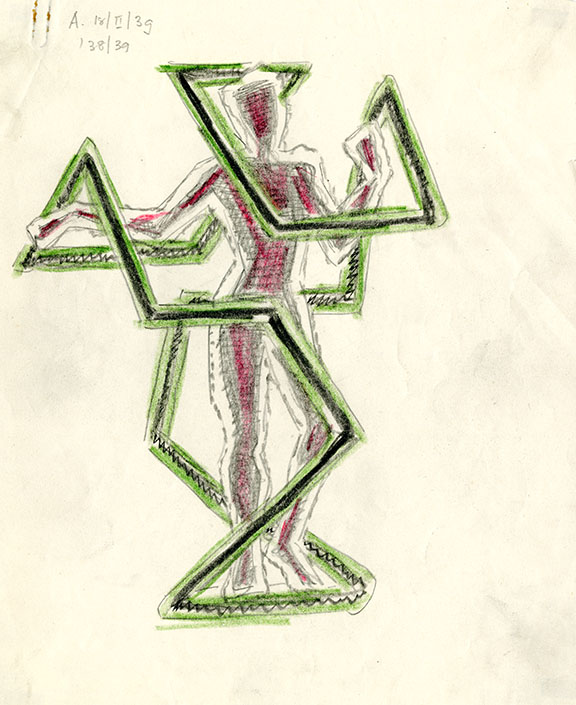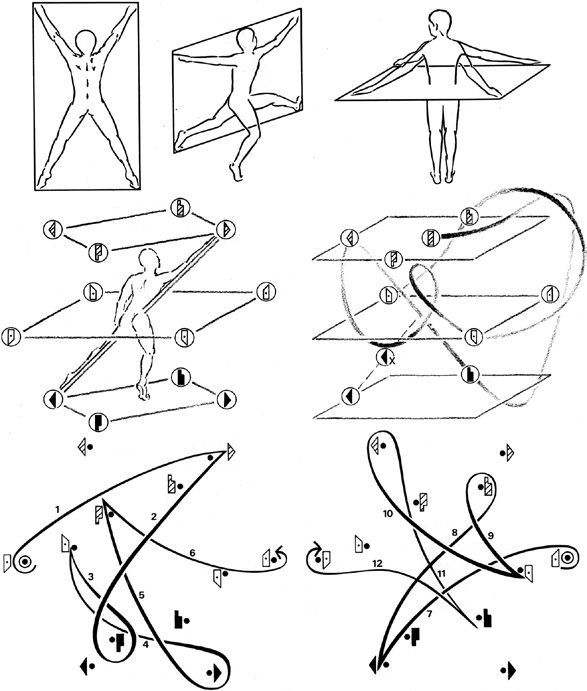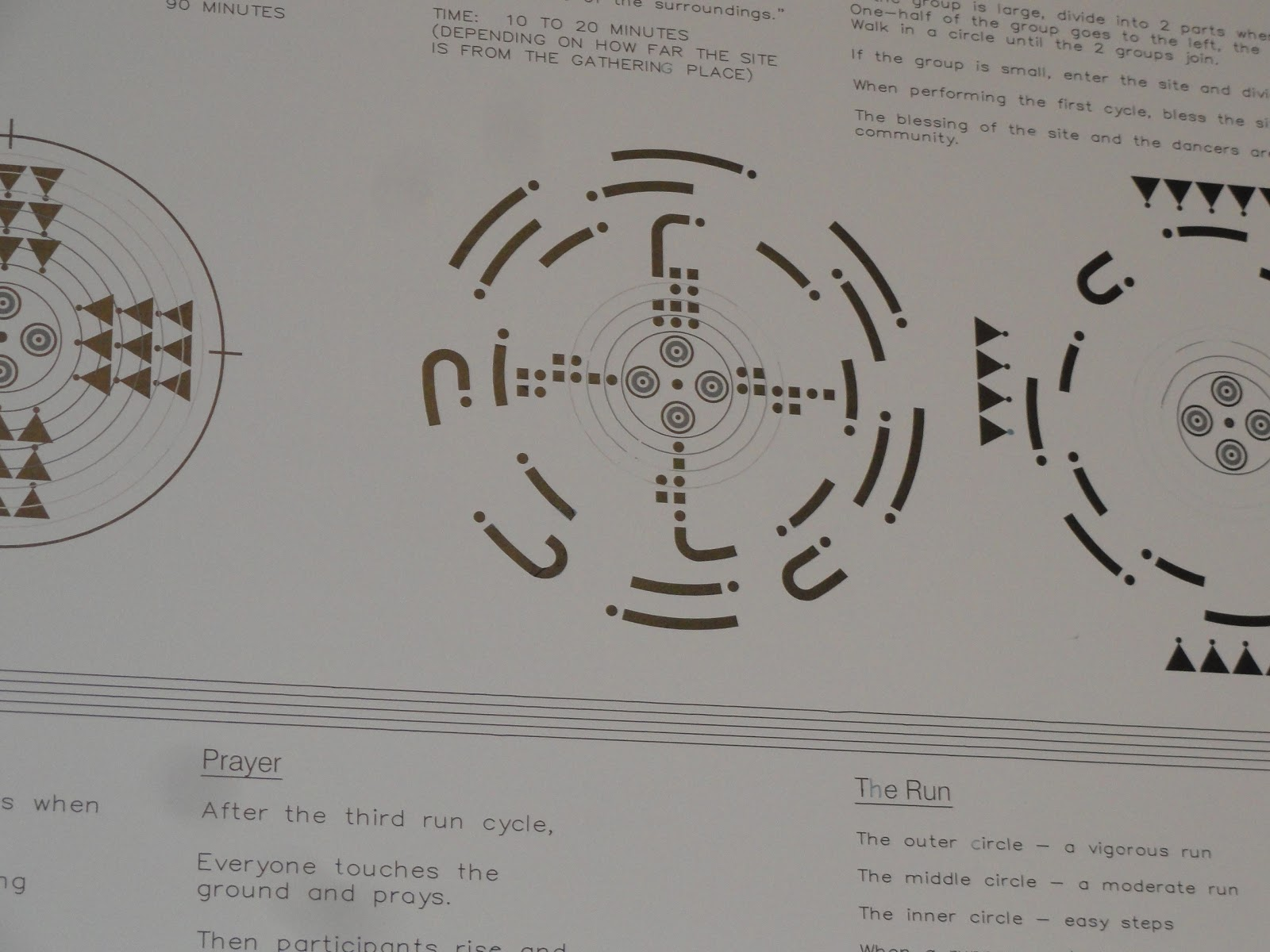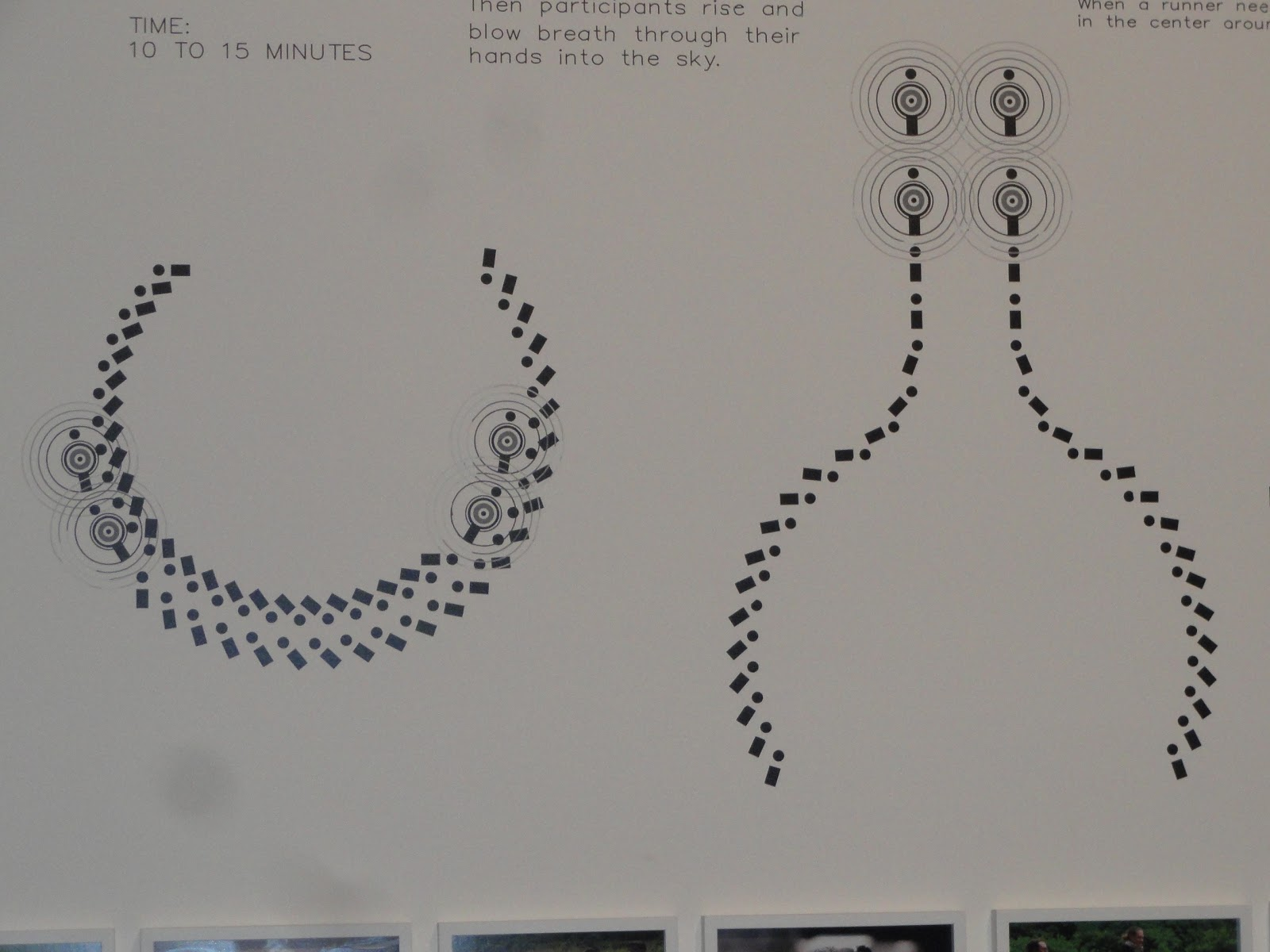I'm very aware that as I make a drawing my body performs a series of movements that could be thought of as a type of dance routine. Back in the 1960s when I worked at the steelworks, we had a time and motion expert come in to analyse the various jobs that we did and in that analysis I for the first time saw the possibilities of some sort of 'work dance', one that however had military overtones.
Motion efficiency study by Frank Gilbreth, c. 1914.
Frank Gilbreth was a pioneering management consultant, who invented the use of cyclegraphs as a way to improve the efficiency of repetitive tasks. The image above could both be used as an example of how a relentlessly monitored production line could dehumanise people and as an idea for a type of choreography and its documentation. As I sit at my drawing desk, I'm sure a time-lapse image of my movements would not be that dissimilar, except for the matter of my taking a break whenever I want to.Movement and its understanding can be both a form of control, (think army marching displays as in the Edinburgh military tattoo) and an expression of freedom.
Military geometry
At a sub-atomic level all is movement and one of the earliest twentieth century attempts to describe the invisible structures that lie beneath perceived reality was Besant’s and Leadbeater’s 'Occult Chemistry', published in London by the Theosophical Publishing Society in 1908. I have mentioned Besant and Leadbeater in previous posts, mainly because of their interest in visualising thought forms and their book 'Occult Chemistry' subtitled, 'Clairvoyant observations on the chemical elements', is a fascinating example of how an awareness of eastern religious practices was at that time beginning to influence western approaches to visualising the unknown.
From: Occult Chemistry
This is how they describe visualising a hydrogen atom in chapter two:
'Turning to the force side of the atom and its combinations, we observe that force pours in the heart-shaped depression at the top of the atom, and issues from the point, and is changed in character by its passage; further, force rushes through every spiral and every spirilla, and the changing shades of colour that flash out from the rapidly revolving and vibrating atom depend on the several activities of the spirals; sometimes one, sometimes another, is thrown into more energetic action, and with the change of activity from one spiral to another the colour changes.'
From Occult Chemistry: The complexities of a hydrogen atom
I was fascinated by the relationship between atomic structure and the organs of the body and tried to develop their atom image as a beating heart. Edwin Babbitt had also proposed an atom of this form in his text "Principles of Light and Colour," His model of the atom was a globular structure composed of spirals and spirillae, with three movements: rotation, orbital motion, and pulsation and I think it would have been Babbitt's idea that was used as a model for Besant and Leadbeater’s diagrams.
The visualisations of Besant and Leadbeater, as well as Babbitt, in some ways resemble those eventually developed in relation to Niels Bohr’s theory of atomic structure and the related laws of quantum mechanics; initially these structures were visualised as electrons in orbit, then they became cloud-like and illustrated as fuzzy-edged three-dimensional geometries, such as vibrating spheres, misty toruses or out of focus dumbbells. I suspect that our ideas of the sub-atomic world will look like something very different in another hundred years time.
A radium atom visualised using Bohr’s theory of atomic structure
Besant and Leadbeater stated, “The atom can scarcely be said to be a ‘thing’, though it is the material out of which all things physical are composed”. “It is" they further stated, "formed by the flow of the life-force and vanishes with its ebb.” This reflects some of our earliest human ideas of religion; ideas that arose out of the contemplation of what happens when someone or something 'stops', when movement comes to an end and things die.
We now tend to think of the sub-atomic world as being composed of wave energies, energy and movement being conjoined. As living beings, in order to respond to experiences, we rely on the constant movement of our sensors in relation to what is out there; we experience this movement as 'life' and its expression is at its most heightened as dance.
The passepied an old French court dance.
The structure of the passepied is not unlike the spiral structures that thread through the atoms as envisioned by Besant and Leadbeater. As the body moves through three dimensional spaces, it forms interlocking wave structures, that if for a moment are realised as diagrams they can be seen as similar to the visualisations produced for Occult Chemistry.
Choreography: Laban diagrams and William Forsythe's Space Trace Notation
A visualisation of the sodium atom from Occult Chemistry

Figure in a dodecahedron
'A bilaterally symmetrical convex dodecahedron consisting of twelve
quadrilateral faces is derived from the icosahedron via a process akin to Fuller’s Jitterbug
Transformation. The unusual zygomorphic dodecahedron so obtained is shown to harbor a
bilaterally symmetrical jazz/blues harmonic code on its twelve faces that is related to such
fundamental music theoretical constructs as the Circle of Fifths and Euler’s tonnetz.
Curiously, the patterning within the aforementioned zygo-dodecahedron is discernibly
similar to that observed in a ventral view of the human brain. Moreover, this same pattern
is arguably evident during development of the embryonic pharynx. A possible role for the
featured zygo-dodecahedron in cephalogenesis is considered. Recent studies concerning
type II cadherins, an important class of proteins that promote cell adhesion, have generated
data that is demonstrated to conform to this zygo-dodecahedral brain model in a
substantially congruous manner.'
I have previously commented on the way that bi-lateral symmetry has affected our relationship with the world and how we think about it, especially as someone that spends many hours drawing on bilaterally symmetrical sheets of paper. This symmetry is of course reflected in the layout of our nervous systems and in the context of brain connectivity van den Heuvel and Sporns have
posited that the human brain contains a bilaterally symmetrical group of twelve major
interconnected neuronal hubs that Becker (2012) has linked to our propensity to respond to particular musical rhythms. A relationship illustrated beautifully by John Coltrane's drawing of a circle of fifths that I used in a previous post, as an illustration of the relationship between rhythm and our spatial understanding.
John Coltrane. Untitled (circle of fifths), 1967
Many years ago I used to tap dance, and I recently found an old pair of my tap shoes in the basement, perhaps its time to revisit my inner body rhythms and to see if my feet have more awareness of these issues than my hands. When I began teaching I noticed some of the older staff wore brogue shoes with solid heels and when they strode out into the studio, they used the sound of their clip-clop rhythm, to both get immediate attention and in Patrick Oliver's case to teach students about the relationship between rhythm and space. What I do feel is that it is the bilaterally symmetrical body that 'knows' these things and that the head follows slowly behind. In the head's embryonic development its pharyngeal arches, pouches, and clefts, are derived from the implications of formal possibilities of the icosahedron and its cells will remember that, especially when the head twists around as the body is dancing.
UV Map* of my bilaterally symmetrical body made using Maya
*A UV Map is a type of vertex map that stores vertical and horizontal positions on a 2D texture. The letters U (Horizontal) and V (Vertical) denote the axes of the 2D texture because X, Y and Z are used to denote the axes of the 3D space. (Vertex = graph)
I look at the map of myself above and see the possibilities of laying it over a star chart. This week I'm designing cosmic tableware and am thinking about what the tablecloth should look like and am getting close to an idea that welds together drawings of the curved time/space that is gravity and the body map.
Space time curvature
The cheese platter has already been made in the form of a moon sitting on a sun.
Soup bowls
Design for batik tablecloth
This is another one of my tranculment ideas. The point being that the things which we surround ourselves with in 'ordinary life' can become entries into a more mythic everyday.
From the micro to the macro is another theme that seems to run through my ideas and as I work through this stuff in my head I remember something else. In the large wall drawing 'Planetary Dance' by Anna Halprin, she presented rituals consisting of explanatory diagrams with accompanying text. Back in 2017 at the Venice Biennale Halprin was offering us a chance to help heal the world by joining its peoples together in a healing set of dances. I took a couple of photographs of the diagrams she drew and they sort of close the circle of my thoughts today on these things and help me link up my various ramblings.
Anna Halprin
At one point in their dancing, participants had to blow breath through their hands into the sky and when they do this we are linked back to the chemistry of breath, the exchange of gases, oxygen and carbon dioxide, that takes place between the body and its environment during respiration, but that's another story.
References
Becker, D.A., (2012) A Peculiarly Cerebroid Convex Zygo-Dodecahedron is an Axiomatically Balanced “House of Blues”: The Circle of Fifths to the Circle of Willis to Cadherin Cadenzas. Symmetry, 4(4), pp.644-666.
Morrisson, M. S. (2009) Occult Chemistry and the Theosophical Aesthetics of the Subatomic World RACAR: Revue d'art canadienne, 34(1), pp.86-97.
van den Heuvel, M.P.; Sporns, O. (2011) Rich-Club organization of the human connectome. Journal of Neuroscience 31, 15775–15786.
See also:
Maps made by our nervous systems
Horizontality and the body
Body cartography
The micro and the macro





















No comments:
Post a Comment